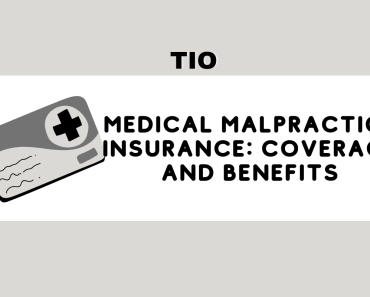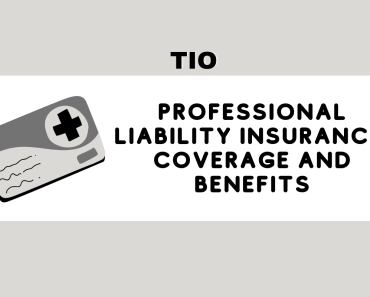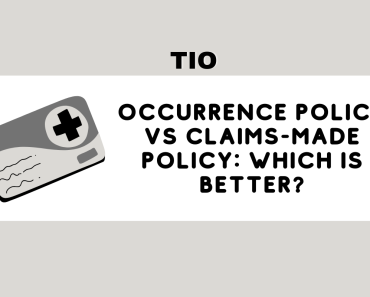As a business owner or professional, you have liability insurance to protect you from claims that may arise from your operations or services. But what happens when your insurance policy ends? Are you still protected from future claims that may come up after your policy has expired? This is where tail coverage comes in. In this article, we will explain what tail coverage is, why it’s important, and how it works.
What is Tail Coverage?
Tail coverage, also known as an extended reporting period endorsement, is an insurance policy that provides coverage for claims that may arise after a liability policy has expired or been canceled. It’s essentially an extension of the original policy that continues to protect you from future claims.
Why is Tail Coverage Important?
Liability claims can take years to surface, and it’s not uncommon for claims to be made months or even years after a policy has expired. Without tail coverage, you would be left without insurance protection for any claims that arise after your policy ends. This means you would have to pay for any legal fees or damages out of pocket, which could be financially devastating.
How Does Tail Coverage Work?
When you purchase tail coverage, you’re essentially buying an extension of your liability insurance policy. This means that any claims that arise after your policy has expired or been canceled will still be covered, as long as the incident occurred during the original policy period.
Who Needs Tail Coverage?
Tail coverage is important for professionals who face potential liability claims in their line of work. This includes doctors, lawyers, architects, engineers, and other professionals who provide services that could result in legal action. It’s also important for businesses that face potential liability claims, such as product liability claims or claims for negligence.
How Much Does Tail Coverage Cost?
The cost of tail coverage varies depending on the insurance provider, the type of policy, and the amount of coverage needed. In general, tail coverage can cost anywhere from 100% to 300% of the annual premium of the original policy.
Tail Coverage vs. Occurrence Coverage
Occurrence coverage is a type of liability insurance policy that provides coverage for claims that arise from incidents that occurred during the policy period, regardless of when the claim is made. Tail coverage, on the other hand, provides coverage for claims that arise after the policy period has ended. Both types of coverage are important, but tail coverage is especially important for professionals and businesses that face potential long-tail claims.
What Happens if You Don’t Have Tail Coverage?
If you don’t have tail coverage and a claim is made against you after your policy has expired, you would be responsible for paying any legal fees or damages out of pocket. This could be financially devastating and could even result in bankruptcy.
How to Obtain Tail Coverage
Tail coverage is typically offered as an endorsement to your original liability insurance policy. You can purchase tail coverage when you first purchase your policy or at any time during the policy period. It’s important to note that tail coverage must be purchased from the same insurance company that provided the original policy.
Risks of Not Having Tail Coverage
Not having tail coverage can expose you to significant financial risks. For example, if a claim is made against you after your policy has expired, you may be forced to pay for legal fees and damages out of pocket. This can be extremely costly and can even result in bankruptcy for some businesses.
How Tail Coverage Can Benefit Professionals
Tail coverage can provide peace of mind for professionals who face potential liability claims in their line of work. For example, a doctor who retires or closes their practice may still face liability claims related to past services. Tail coverage can provide protection for those claims, even after the policy has expired.
Tail Coverage for Businesses
Tail coverage is also important for businesses that face potential liability claims. For example, a product liability claim could arise years after a product has been discontinued. Tail coverage can provide protection for those types of claims, even after the policy has expired.
Factors to Consider When Choosing Tail Coverage
When choosing tail coverage, it’s important to consider factors such as the length of the tail coverage period, the amount of coverage needed, and the cost of the coverage. It’s also important to choose a reputable insurance provider that has experience providing tail coverage for your industry.
Frequently Asked Questions (FAQs)
- What is the difference between tail coverage and occurrence coverage?
- Who needs tail coverage?
- How much does tail coverage cost?
- How long should you keep tail coverage?
- What happens if you don’t have tail coverage?
Conclusion
In conclusion, tail coverage is an important type of insurance coverage for professionals and businesses that face potential liability claims. Without tail coverage, you may be left without protection for claims that arise after your policy has expired, which can be financially devastating. When choosing tail coverage, it’s important to consider factors such as the length of the tail coverage period, the amount of coverage needed, and the cost of the coverage. By obtaining tail coverage, you can protect yourself and your business from the financial risks associated with liability claims.









